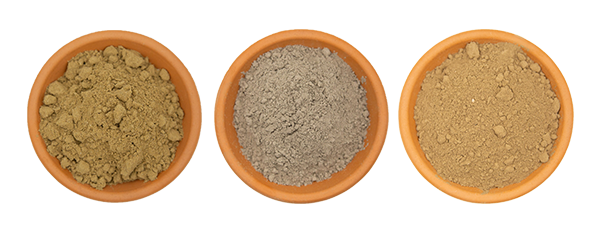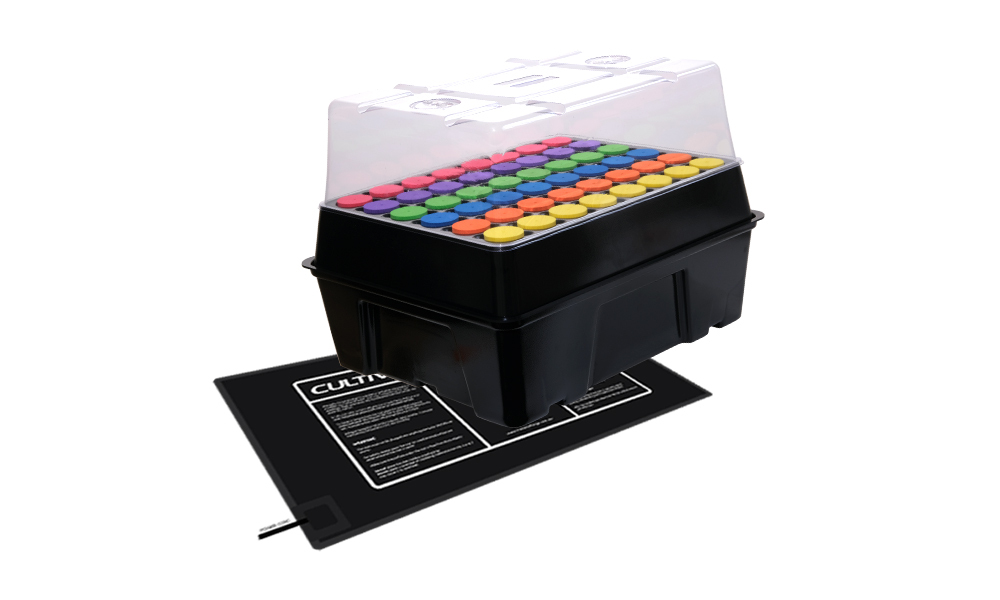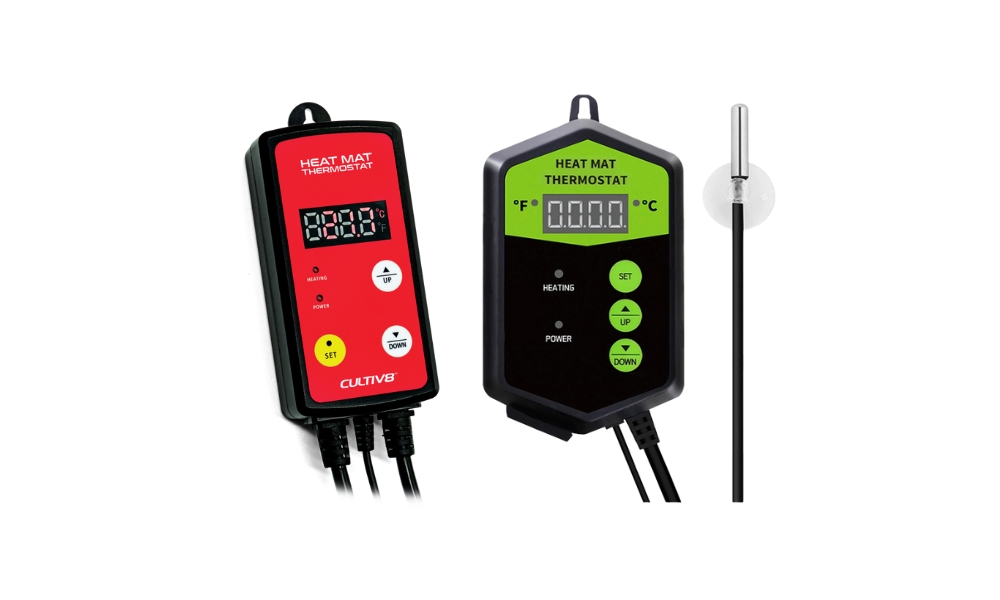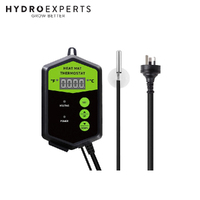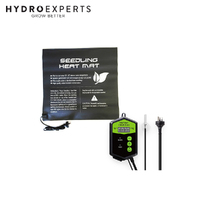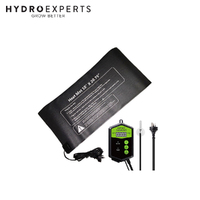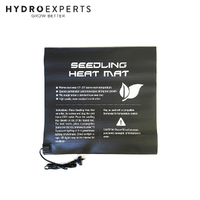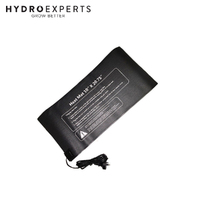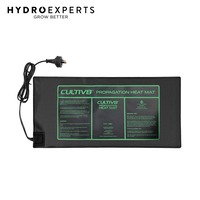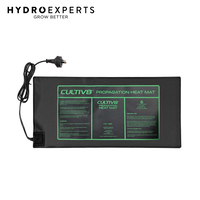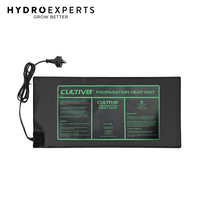Heat Mats for Australian Hydroponics: Essential Growing Solutions for Year-Round Cultivation
By Hydro Experts | 28 May 2025
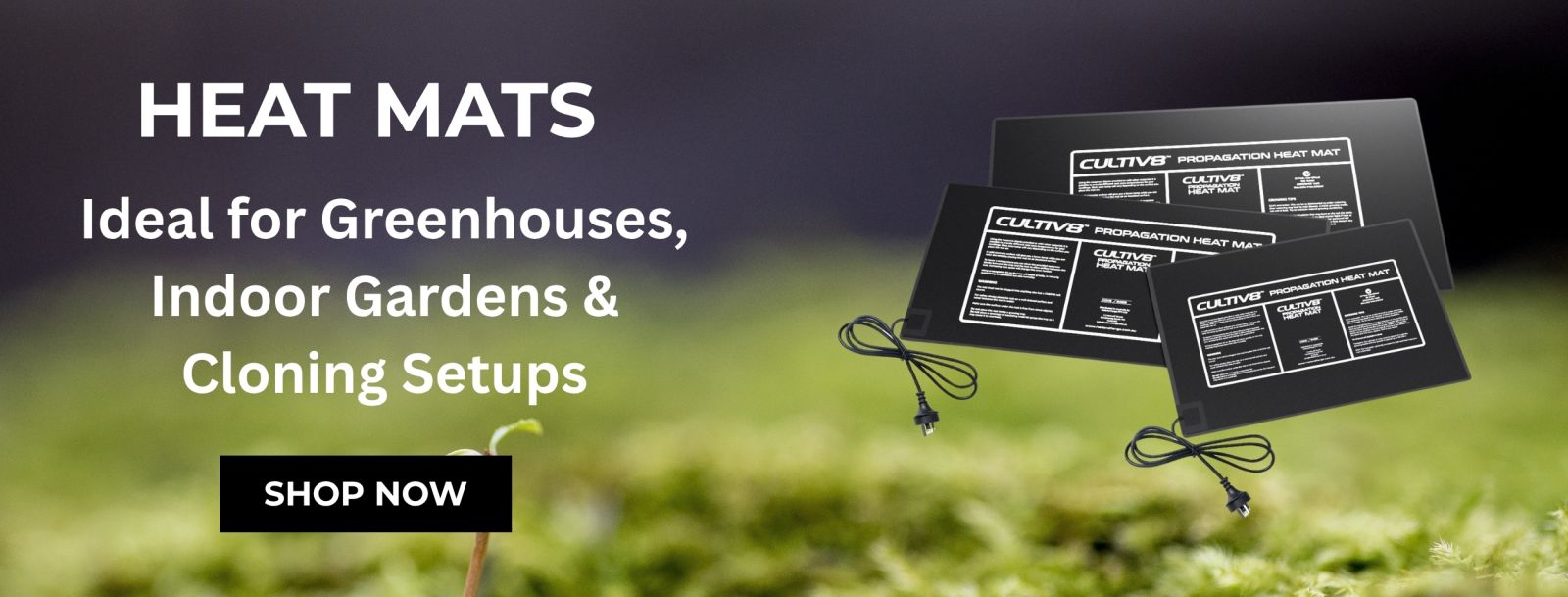 Australia's diverse climate presents unique opportunities and challenges for hydroponic growers and gardening enthusiasts. While our winters may not match the harsh conditions experienced in northern hemisphere countries, the temperature variations across our continent create specific requirements for successful plant cultivation throughout the year.
Australia's diverse climate presents unique opportunities and challenges for hydroponic growers and gardening enthusiasts. While our winters may not match the harsh conditions experienced in northern hemisphere countries, the temperature variations across our continent create specific requirements for successful plant cultivation throughout the year.
Heat mats have emerged as an indispensable tool for Australian growers seeking to maintain optimal growing conditions for seed germination, seedling development, and hydroponic systems. These targeted heating solutions provide precise temperature control exactly where plants need it most, offering energy-efficient alternatives to heating entire growing spaces.
Understanding Australia's Growing Climate Challenges
The Australian growing environment presents distinct characteristics that make heat mats particularly valuable for horticultural applications. Unlike regions with consistent seasonal temperatures, Australia experiences dramatic climate variations both geographically and seasonally.
In tropical North Queensland, growers face mild winter nights that may drop to 17°C, while Tasmanian and alpine region cultivators contend with genuine frost conditions and temperatures well below freezing. Most Australian growing spaces, whether commercial greenhouses or home growing setups, often lack adequate insulation, making temperature control a critical consideration for successful cultivation.
Many growing structures across Australia were designed primarily to manage summer heat rather than winter cold retention. Single-glazed greenhouse panels, inadequate sealing around doors and vents, and insufficient insulation mean that even moderate temperature drops can significantly impact plant health and growing success rates.
Heat Mats: Precision Temperature Control for Plant Growth
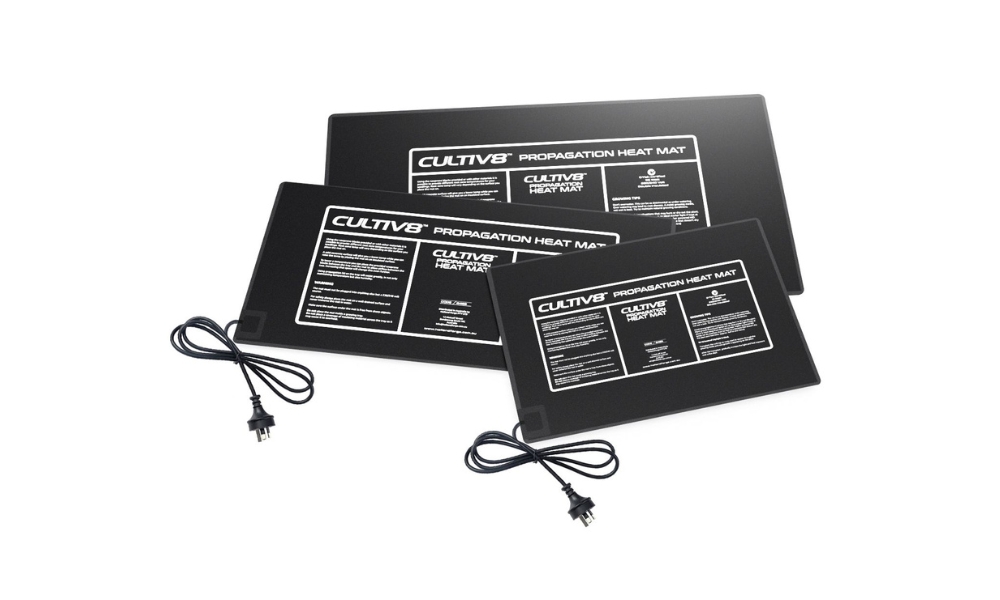
Heat mats represent a fundamental shift from ambient heating approaches to targeted root zone warming. These flat, flexible heating elements work through electrical resistance, generating controlled heat that radiates upward directly to plant root systems and growing media.
The principle behind heat mat effectiveness lies in addressing plant thermal requirements at the root level, where temperature control most directly influences growth rates, nutrient uptake, and overall plant health. Rather than attempting to warm entire growing spaces, heat mats deliver precise temperature management to the specific zones where plants require thermal support.
Essential Applications for Hydroponic and Growing Operations
Seed Germination Enhancement
Successful seed germination represents the foundation of any growing operation, and temperature consistency proves critical for achieving optimal germination rates across different plant varieties. Heat mats provide the controlled warmth necessary to maintain ideal germination temperatures, typically ranging from 18°C to 30°C, depending on the specific crops being cultivated.
Australian growers working with temperature-sensitive varieties such as tomatoes, peppers, and herbs benefit significantly from heat mat applications during germination phases. These crops require consistent soil temperatures above 20°C for reliable germination, conditions that can be challenging to maintain naturally during cooler months across much of Australia.
Professional growers report germination rate improvements of 20-40% when using appropriately sized heat mats compared to ambient temperature germination attempts. This improvement translates directly into reduced seed waste, more predictable production schedules, and enhanced economic returns for commercial operations.
Hydroponic System Optimisation
Hydroponic systems present unique temperature management challenges, as nutrient solutions and growing media can quickly lose heat in cooler conditions. Root zone temperatures below optimal ranges significantly impact nutrient uptake efficiency and can lead to reduced growth rates or plant stress.
Heat mats designed for hydroponic applications maintain consistent root zone temperatures in deep water culture systems, nutrient film technique setups, and growing media-based hydroponic configurations. By maintaining optimal root temperatures between 18°C and 22°C for most crops, these heating solutions ensure that hydroponic systems operate at peak efficiency regardless of ambient temperature fluctuations.
The energy efficiency of targeted root zone heating proves particularly valuable for hydroponic operations, where maintaining entire growing space temperatures would require substantially higher energy investments. Heat mats allow growers to optimise plant growth conditions while minimising operational costs.
Seedling Development Support
Young seedlings require stable growing conditions to develop robust root systems and healthy growth patterns. Temperature fluctuations during early growth phases can cause transplant shock, reduced vigour, and increased susceptibility to diseases and pests.
Heat mats provide the consistent warmth necessary for optimal seedling development, particularly important for growers working with valuable or difficult-to-propagate varieties. Professional nursery operations and serious home growers use heat mats to maintain seedling growing areas at optimal temperatures, ensuring strong plant development before transplanting to final growing positions.
This application proves especially valuable for Australian growers preparing seedlings during winter months for spring planting schedules. Maintaining appropriate seedling temperatures during cooler periods allows for extended growing seasons and more flexible production timing.
Propagation and Cutting Success
Vegetative propagation through cuttings requires specific temperature conditions to encourage root development while preventing plant stress. Heat mats create ideal conditions for cutting propagation by maintaining consistent bottom heat that promotes rapid root formation.
Many Australian native plants and specialised varieties require specific temperature ranges for successful propagation. Heat mats enable growers to maintain these precise conditions, improving cutting success rates and reducing propagation timeframes.
Energy Efficiency and Operational Considerations
Heat mats demonstrate exceptional energy efficiency compared to alternative heating methods for growing applications. Most propagation and germination heat mats operate between 20-100 watts, consuming significantly less energy than space heaters or greenhouse heating systems while providing more targeted temperature control.
The focused heating approach eliminates energy waste associated with heating unused growing space. Temperature regulation through thermostatic controls ensures that heat mats operate only when necessary, further enhancing energy efficiency and reducing operational costs.
Quality heat mats include built-in temperature monitoring and control systems that maintain consistent temperatures within narrow ranges, typically plus or minus 2°C of target temperatures. This precision control optimises growing conditions while preventing energy waste from temperature overshooting.
Selection Criteria for Growing Applications
Choosing appropriate heat mats for hydroponic and growing applications requires consideration of several key factors that directly impact performance and growing success.
Size requirements depend on the growing area being heated and the specific application. Seed germination typically requires smaller mats sized to match seed tray dimensions, while hydroponic system applications may require larger mats or multiple units to provide adequate coverage for root zones.
Temperature control capabilities represent a critical selection factor. Basic heat mats provide fixed temperature output, while advanced models include adjustable thermostats and temperature monitoring systems. For professional growing operations, temperature control precision justifies investment in higher-specification units.
Durability considerations become important for growing environments where moisture exposure and regular use demand robust construction. Waterproof or water-resistant heat mats prove essential for hydroponic applications and high-humidity growing environments.
Regional Applications Across Australian Growing Zones
Different Australian growing regions benefit from heat mat applications in distinct ways based on local climate conditions and growing challenges.
Coastal regions, including Victoria and New South Wales, experience damp winter conditions that can significantly impact seed germination success and seedling health. Heat mats provide the consistent warmth necessary to overcome these challenging conditions, enabling year-round growing operations despite ambient temperature and humidity fluctuations.
Tasmania and alpine regions require heat mats as essential equipment rather than optional enhancements. Genuine freezing conditions make controlled heating necessary for any winter growing activities, while extreme temperature variations demand precise temperature management for consistent growing success.
Tropical and subtropical regions, including Queensland, benefit from heat mat applications during air-conditioned growing environments and for temperature-sensitive crops that require specific root zone temperatures above ambient conditions.
Interior and desert regions experience dramatic day-night temperature variations that can stress plants during critical growth phases. Heat mats provide temperature stability during cooler periods while allowing natural cooling during warmer daylight hours.
Professional Growing Integration
Commercial growing operations increasingly integrate heat mats into comprehensive environmental control systems that optimise growing conditions while managing energy costs. These integrated approaches combine heat mats with monitoring systems, automated controls, and energy management protocols.
Heat mats support sustainable growing practices by enabling energy-efficient temperature management and extending growing seasons without requiring extensive infrastructure investments. This capability proves particularly valuable for small-scale commercial growers and market gardeners seeking to optimise production efficiency.
The versatility of heat mat applications allows growing operations to adapt heating strategies to specific crops, growing phases, and seasonal requirements. This flexibility supports diverse crop rotations and specialised growing programs that require precise environmental control.
Investment Analysis and Return Considerations
Quality heat mats for growing applications typically range from $40 for small propagation units to $200 for larger hydroponic system applications. Professional-grade units with advanced temperature control systems may require higher initial investments but provide enhanced performance and durability.
The return on heat mat investments manifests through improved germination rates, reduced crop losses, extended growing seasons, and enhanced production predictability. Many growers report that heat mat investments pay for themselves within a single growing season through improved crop success rates and reduced heating costs.
Long-term benefits include reduced dependency on ambient temperature conditions, enabling more consistent production schedules and improved crop planning capabilities. These operational advantages prove particularly valuable for commercial growing operations and serious home growers seeking reliable cultivation results.
Advancing Australian Growing Capabilities
Heat mats represent a strategic approach to addressing Australia's unique growing challenges while supporting sustainable and energy-efficient cultivation practices. As energy costs continue rising and climate awareness increases, targeted heating solutions become increasingly important for maintaining viable, growing operations.
The technology enables Australian growers to extend growing seasons, improve crop success rates, and maintain consistent production regardless of ambient temperature conditions. This capability supports food security objectives and enables local production of fresh crops throughout the year.
For hydroponic growers, market gardeners, and serious home cultivators, heat mats provide essential temperature control capabilities that transform challenging growing conditions into opportunities for successful cultivation. The precision, efficiency, and reliability of modern heat mat technology make these heating solutions indispensable tools for advancing Australian growing capabilities across all climate zones.
Frequently Asked Questions
Most vegetable and herb seeds germinate optimally between 20-25°C, though specific requirements vary by crop variety.
Yes, waterproof heat mats designed for hydroponic use can be placed under nutrient reservoirs to maintain optimal root zone temperatures.
Standard propagation heat mats typically consume 20-100 watts, significantly less than conventional space heaters, while providing targeted warming.
A thermostat is essential for precise temperature control and energy efficiency, preventing overheating and maintaining consistent growing conditions.
Seedlings should remain on heat mats until they develop strong root systems and can tolerate ambient temperatures, typically 2-4 weeks after germination.

